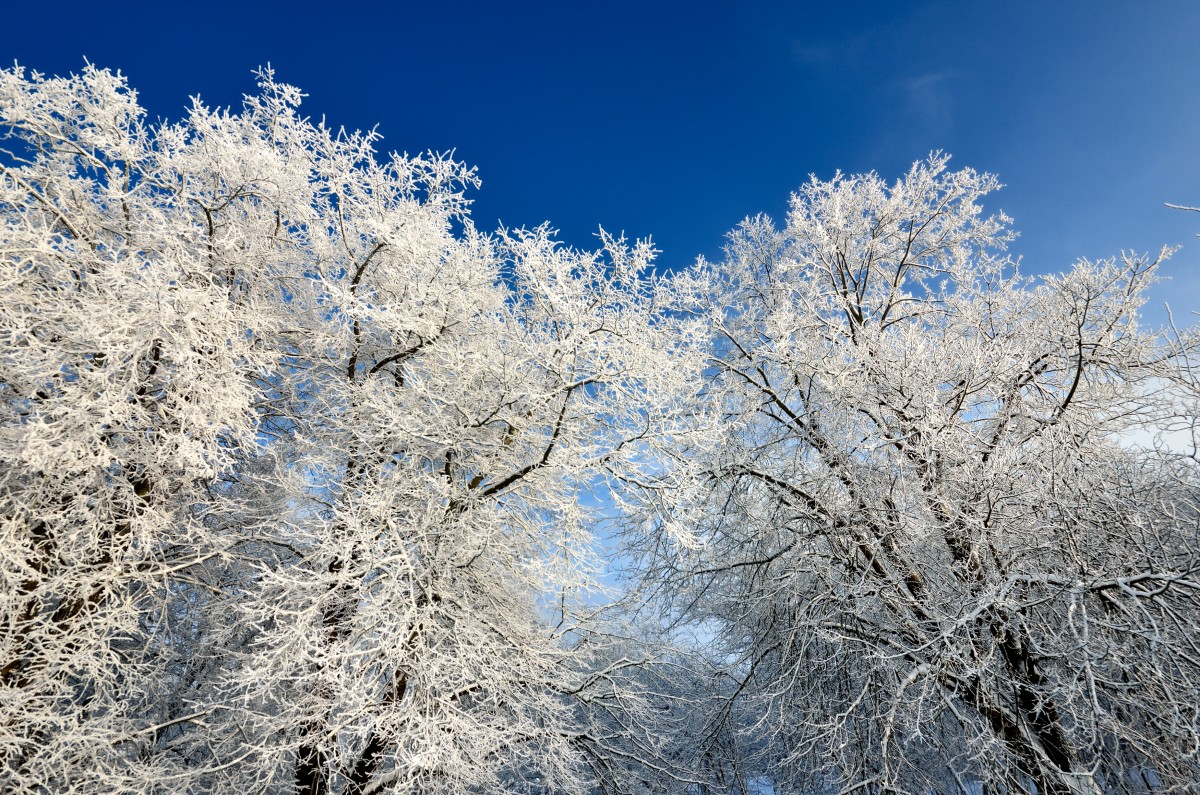When we think about our trees, many of us understand the coming of winter to mean a kind of shutdown, hibernation or even “temporary death” symbolized by leaf fall, barrenness to the eye, and cessation of function (dormancy). Y et dormancy in this sense is an unfair and misleading overstatement. Indeed, what many consider as an autumnal apogee in the botanic cycle of life is, in reality, a critical and necessary time in the growth and health of green trees.
In fact, it is fall and winter that together lay the base of life. It is a beautifully recurring pattern that can be encouraging and even awe-inspiring; a new grasp of just how it comes to be may change forever our appreciation of the perennially resident miracles of adaptation, response and the continuance of life. It is not at all untrue to say that fall and winter are together “the season of the roots.” Here, below the soil and out of our sight, occurs the preparation for the supply and support of next year’s growth and glory. It is this autumnal/hibernal expansion of new roots in and through the soil that is the promise.
Roots provide support (anchorage), storage of energy (sugar-carbohydrates), absorption of nutrients and water from the soil, and transport of fluids along and intricately designed two-way highway. This fourfold behind-the-scenes role should win “Best Supporting Actor” in season and out.
In season, the recombining of carbon molecules in the photo-synthetic process requires water. This water requirement is supplied by extraction/absorption of soil water by tiny blonde root hairs. In most soils, these little root hairs – .5mm to .1mm in diameter – are assisted by the presence of fungal hyphae called mycorrhizae (fungus roots). This tiny procurement system is so delicate and fine that it may never be seen in spadeful of dirt. It is therefore very susceptible to damage or dysfunction in number of ways.
Near the end of summer (approaching “out of season”), the chloroplasts in the leaves where sugar is manufactured are caused to shut down by decreased light in the shortening days. The function of the leaf is now nearly complete. Soon after the leaf’s true colors (pigments) are unmasked by the departure of chlorophyll, the leaf will die. Sugar (carbohydrate) is stored in all parts of the Tree and is used in the root system for new root extension. So long as soil temperatures remain generally above 47 degrees F., root growth may continue throughout the winter months, ceasing only as the longer spring days and rising mean temperatures cause bud swell and the capillary uptake of water and sugars.
So for the wintertime, the root zones, the roots and their function occupy center stage. And a lot can go wrong, especially in busy places occupied by people and the things that people do. One big danger for those delicate little root hairs and their phosphorus-grabbing mycorrhizal assistants is soil compaction. The most notorious place for compaction is on construction sites, but soil compaction can occur on other spots also. Foot traffic under trees in public or private areas can do the same thing over time. Also, clay soils in manicured lawns where natural mulch and organic materials are systematically removed can over time compact and lose its capacity to retain oxygen (air).
Almost always, trees living in artificial environments also need artificial help. They don’t (can’t) take care of themselves. Neglect of “lawn trees” does not so often imply death as it does function diminishment and consequent susceptibility. If death does come, it is usually the caboose in a long invisible train of multiple/compound events often separated by several seasons. Few things “just happen.”
Another big danger for roots – and then the entire tree – is water in wrong amounts, either too little or too much. Now too much water can “just happen” if it rains too much, but just as often it is the overuse or misuse of irrigation of irrigation systems – a preventable event. Especially in clay soils, excessive water over an extended period can lead to a soil condition known as anoxia, which is the absence of air in the soil. Air and water cannot occupy the same spaces at the same time. In the environment, those root hairs will “drown” or at least become impaired in their ability to do their job. If they’re not blonde, they’re not working.
Too little water is the opposite problem. While more tree owners seem more aware of this potential hazard, somehow wintertime seems to be taken as a “King’s X Period” and it is not so at all. Winter desiccation is not uncommon in evergreens and it occurs in deciduous trees as well. Watering is important even in winter
during periods of little or no rainfall. Long slow applications should be spaced out four to six days apart to permit intermittent drying and aeration of the soil. Deep watering also encourages the establishment of a deeper root system that will be more drought resistant. Watering and aeration go hand in hand: you can’t have one without the other.
There are many more factors in the wintertime tree health equation, but the concerns mentioned here seem to be the most common source(s) of trouble, year in and year out. The bottom line is that it is helpful to remember that trees and plants in general are very much like us in one important way: If we get our rest and
exercise and eat right, we’re not as likely to catch a cold that can deteriorate into pneumonia, even in the winter.









